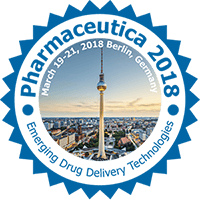
Ilayda Acaroglu Degitz
Yeditepe University, Turkey
Title: Paclitaxel release from magnetite crosslinked polypropylene fumarate nanoparticles
Biography
Biography: Ilayda Acaroglu Degitz
Abstract
In the treatment of cancerous cells, the most common treatment, chemotherapy, involves high toxicity and non-specific targeting in the body which leads to both cancerous and non-cancerous cells, inside and outside the tumor becoming damaged or destroyed due to the agents spreading throughout the body which further limit the productivity. Therefore, attempts are more focused on targeting cancer therapeutics, thus reaching the objective of developing new carrier systems with both existing and new drugs. Magnetic drug delivery using drug carriers such as biodegradable polymers, is a very efficient method to target the drug to a localized disease site in the body. The aim of this study was to develop a new magnetic drug delivery system. For this purpose, magnetic nanoparticles were incorporated in biocompatible polymers namely polypropylene fumarate (PPF) which was crosslinked with an N-vinyl pyrrolidone (NVP) using photo initiated miniemulsion polymerization method. FTIR spectroscopy was used to confirm the crosslinking of PPF with NVP, and swelling tests were used to determine the percentage of crosslinking. Then the morphology and size of crosslinked polymer particles with and without magnetite were determined by scanning electron microscopy (SEM). Crosslinked polymer nanoparticles with embedded magnetic nanoparticles were loaded with paclitaxel (anticancer drug). The amount of drug released from crosslinked polymer nanoparticles with and without magnetite was determined using high-performance liquid chromatography (HPLC) and these carriers were found to release all the encapsulated drugs in less than one month, before the polymer nanoparticles were degraded. Thus, it suggests the drug release to be diffusion controlled.

